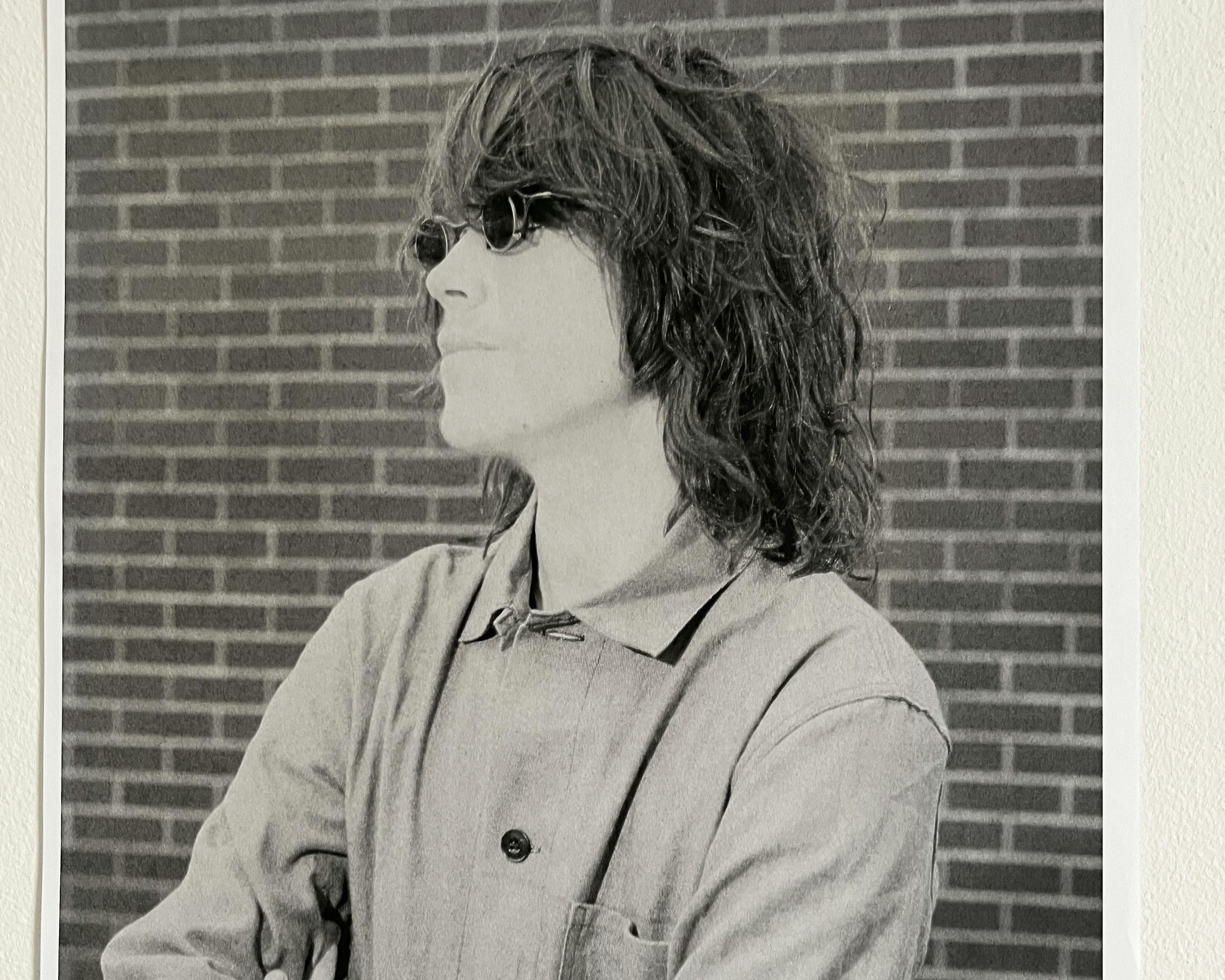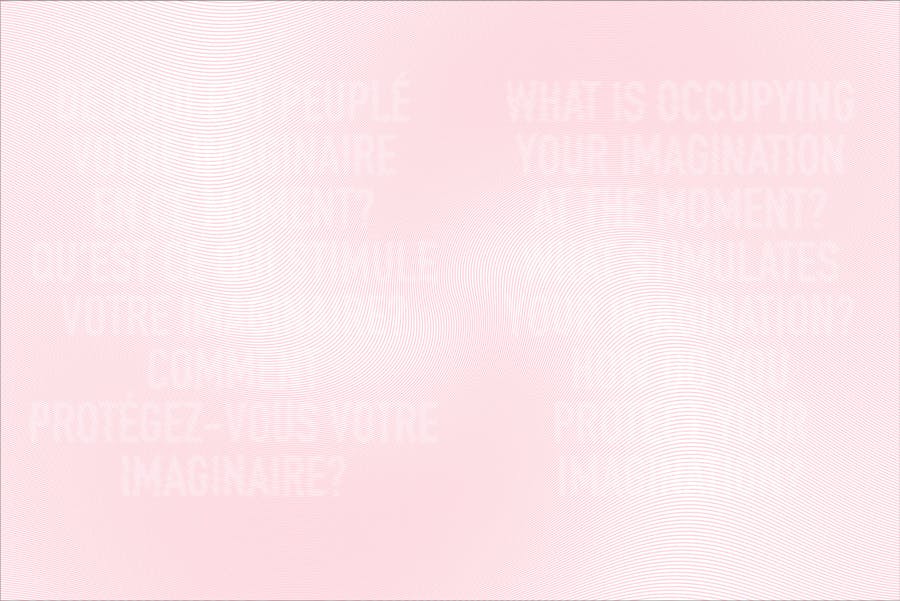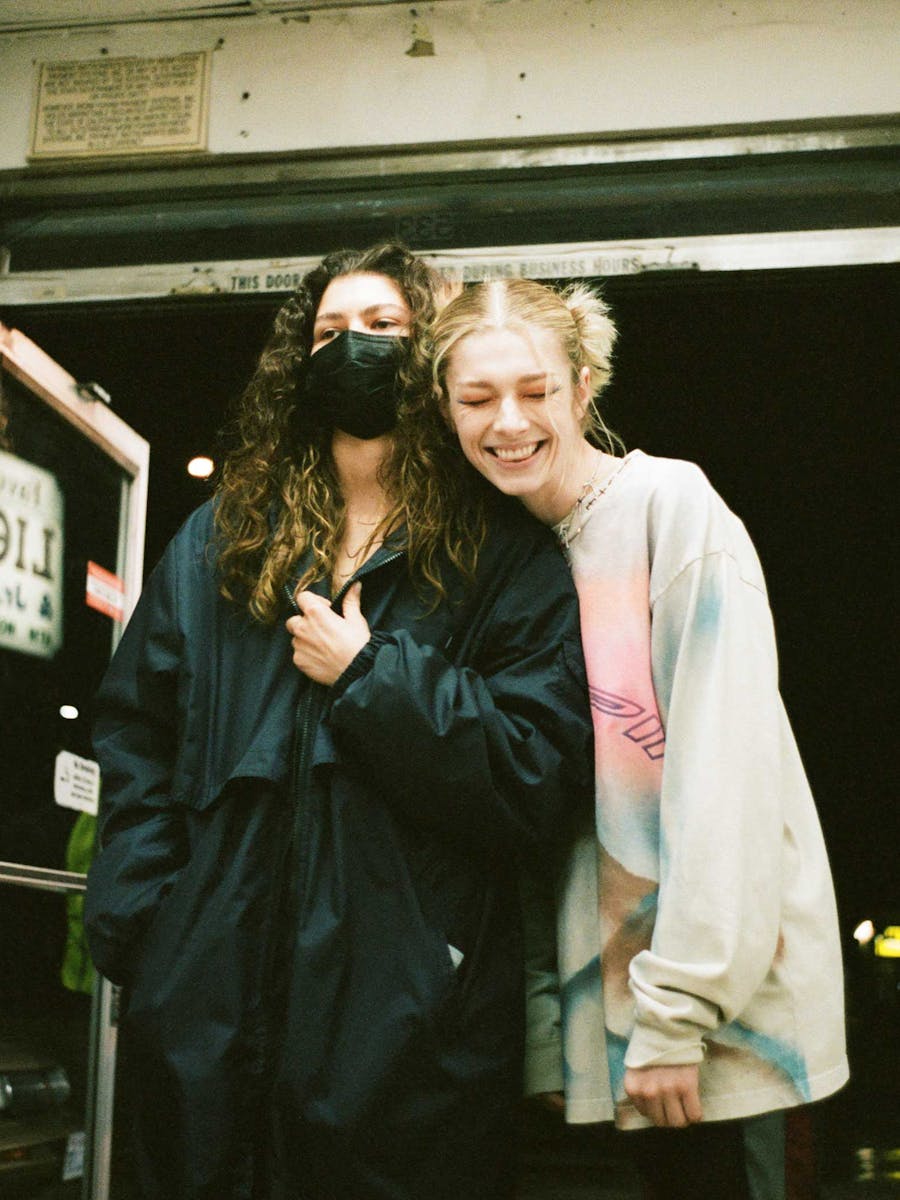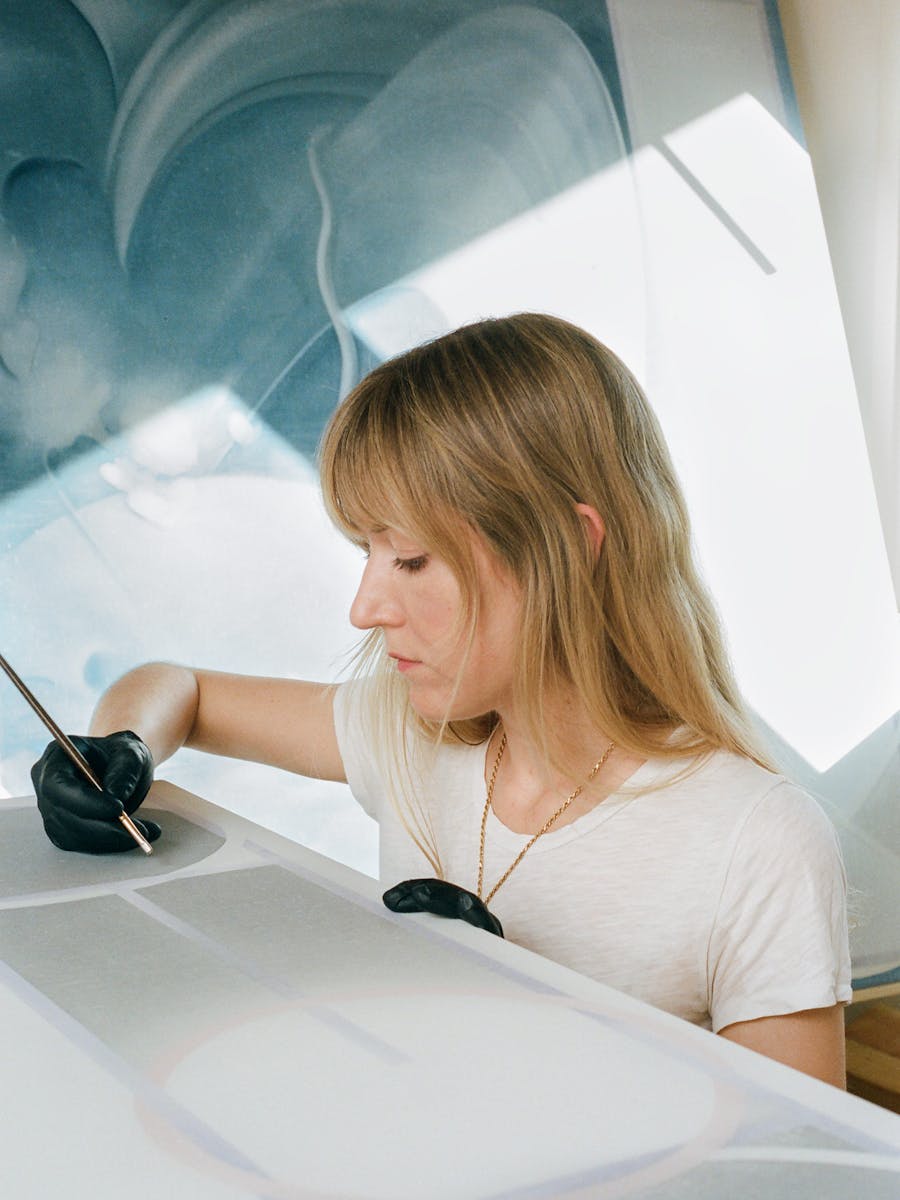On entering the studio that SMITH occupies in the Villa des Arts in the 18th arrondisse - ment in Paris, one is first of all intimidated by the artist’s library. Almost opposite the entrance, there is a shelf of Foucault, a shelf of Derrida, a shelf of Butler. A passion for Deconstruction of course, but above all a trigger for bad critic syndrome, the anxiety of coming to the interview unprepared. However, once the angst provoked by this erudition has passed, SMITH, in his thirties, warm and prolix – welcomes me. He laughs at this first impression, not too dissimilar to that which his work can elicit when one plucks up the courage to engage with it, a work that speaks of the cosmos, identity, and everything that happens 'between', switching with no warning from one artistic practice to another. To photography, his first medium (which seemed the obvious choice after a childhood spent with photographer parents and which became his working tool at the Ecole Nationale Supérieure de la Photographie at Arles), SMITH quickly added installation, performance and conferences, often also working with fiction, either textual or sound based. Spread across several years, sometimes bringing together dozens of collaborators, these "indisciplinary" projects, as SMITH terms them, are opportunities for the artist to test out different modalities of his creativity, without being confined.
From the outside, it seems like your creative process starts without you knowing what form, or rather forms, it will take. But what are the rules of the game when you start to play ?
It's more about a methodology than rules of the game. Right at the start, projects are like obsessions. They emerge from the interest stimulated by something I've read, a meeting or a dis - cussion. These obsessions take over my life all of a sudden. It could be the popularization of quantum mechanics, Soviet telecommunications technology before the Internet, accidents in space, the link between trance and mysticism, or even trans-identity. From that spark, I immediately have to know everything about the subject in question, meet all the experts, and go to all the conferences about it. That’s how my projects come into being. I realize that this spark is often linked to a childhood memory that has been revived, and once the subject has taken hold of me, it's really as if I were haunted or possessed by it. It's a little like writing a thesis, and that is why I like the term 'artist-researcher', even if I find it a bit fusty.
What happens once the spark is lit ?
What interests me is precisely understanding these sys - tems and exploring their blind spots, the mystery, the unforeseen, the unforeseeable, the breach. For example with TRAUM (edi - tor’s note: project undertaken between 2015 and 2017 including a short film, a series of 3D prints, photographs, archive documents, a book, the creation of a virtual world and a performance), the starting point was an accident in space. Hardly any have occurred in the history of aerospace engineering, be it Soviet, European or American. How is that? What happened when there was an acci - dent? What does that tell us? Once I have identified this breach, I try to develop an archipelagoof thought, bringing together elements that are connected in invisible ways. In the caseof TRAUM, it developed in conversation with the writer Lucien Raphmaj, from the mystery of a death in space, someone ‘exploding’. It really is fascinating, this extra-terrestrial death, this pulverized, plasticated body, evaporating like snow under the sun! Then I reached out to Florian Gaité, who at the time was working on his thesis about people with brain injuries under the supervision of Catherine Malabou. I was thinking about this neurological pulverization and that it’s somehow the same thing. And then that reminded me of the way in which a star lives and dies, when it becomes a supernova, a black hole. Connections are made like that, in a ‘Eureka’ moment where I see an incredible connection between two subjects between which there is, a priori, no link.
And it’s at that moment that the choice of form presents itself ?
Yes, in general, the form presents itself at that moment. I’ll tell myself, for example, ‘the work has to be a series of lectures, with an element of performance, with a physicist, an astronautical engineer, a neurologist… ’Or I’ll think: ‘you know what, for this transformation, images are necessary, to show what happens in a brain, on different levels, so this is going to be a film.’ The medium presents itself in an attempt to translate as successfully as possible the intuition or the desire behind the story.
It’s the narrative, then, that gives rise to the medium, without feeling constrained by concerns about whether you know how to do it or not… Something important happened in 2010 at Fresnoy [editor’s note: Le Fresnoy - Studio National des Arts Contemporains created in 1997 in Tourcoing, is a training institute for the production and diffusion of audiovisual and digital art].
When I arrived I was a photographer and photography for me was a very intimate, solitary practice. I managed the whole process from A to Z. The thought of making a film, overseeing 200 people, with producers, with all that money, seemed to me at the time to be completely insurmountable. At Fresnoy, I realized on the one hand that I could make films alone, working in a way that is close to video, with that kind of economy. And on the other hand, I discovered what I had not understood as a photographer, managing almost the entirety of the production chain of my works alone: that cinema offered me the opportunity to work in a team, surrounded by producers and technicians, and that as a director I was not obliged to have specific skills to make a film, because this medium operate son the basis of a distribution of tasks. I have become much freer by moving beyond the idea that you haveto necessarily havetechnical mastery of disciplines to dare to use them. I don’t really believe in total art, but more in a porousness between the practices that I am developing. These practices present themselves, therefore, according to the project, as the only language in which such the idea can be expressed, just as there are certain words you have to look for in a foreign language because they don’t exist in French.
Does this position of ‘artist-researcher’ allow you to express things in a different language from that of university research ?
The position of ‘artist-researcher’ involves this rather intoxicating idea of claiming to be able, in one way or another, to contribute to research. Creating images, I believe, is contributing to research in a way that is no less valuable than a more scholarly, theoretical approach. It is important for me, precisely becauseI am grappling with this academic language : I will soon be submitting a thesis in the form of a series of audiovisual propositions. In total, there are 18 hours of film, images, sounds, performances. I spent four months making it, after having spent six years not being able to write it. I worked with philosophers like Jean-Luc Nancy and Bernard Stiegler who were my supervisors at various points, and I realized that academic language is not my language.
In the essay ‘The Monolingualism of the Other’, Jacques Derrida wrote : ‘I have only one language and it is not mine.’ For some people, their mother tongue is that of the people who colonized them, the result of cultural identities which are not necessarily theirs. In a different register, my language cannot be that of the university, which for so long has excluded the possibility of my trans and queer identities, which I had to construct with other languages, especially images. Derrida invented lots of neologisms which are wonderful portmanteaus. They are words which help you think things that were impossible before, and that is also what I am doing in my work.
Language, playing games with it, creating words, are indeed an important part of your practice…
Yes, I regularly work with Lucien Raphmaj, a science fiction author who is also a philosopher. We have also invented lots of words together to think about concepts that seem indefinable otherwise, for example ‘endocosmology’, which designates a way of thinking about the cosmos not through the toolsof Western science, but rather on the basis of our interiority. Another word I have in mind, another portmanteau that I’m elaborating right now is ‘entranspectre’, which consists of the words ‘entre’ [between], ‘trans’ and ‘spectre’, which all imply a movement from point A to point B, whilst in fact something else could come into play, from the perspective of a variation in intensity, of an incessant movement.
In this will to create a language and constellate artistic forms, is there a possible analogy with the figure of the stage director or dramaturge ?
Certainly, I use portmanteau words like I use portmanteau disciplines : a performance can be at the same time a conference and a piece of theatre. I’m not the only person on earth doing this, of course, but it’s in this ‘indiscipline’ that I feel most comfortable. It allows me to permanently evade definition, labels. Moreover, all the figures I use in my fictional projects are ‘entranspectral’, like axolotls, caught in a moment of transition, of crossing, of transformation, of metamorphosis. These are figures who are difficult to seize. That’s also why I multiply forms to tell their stories, rather than it just being a compulsion to use every medium. In this sense, the analogy with the dramaturge is both apt and inadequate. When I changed my name, I chose as my public name that of SMITH, which is both my surname and the most common name in the western world. It means I can invite other identities into this name, to integrate the element of alterity in my practices into my projects.
Would you even go so far as to think of your practice in terms of an artistic collective, given the collaborations you initiate ?
I don’t think so. For example, I tried to remove my name entirely from the exhibition at Recontres d’Arles, telling myself that maybe people would look at the work differently, and it would integrate to a greater degree the work of my collaborators (Diplomates, Nadège Piton, Lucien Raphmaj, Gaspar Claus, François Chaignaud…) which I see as equal to my own. But I couldn’t because the press only wanted interviews with me, and would only use my name. Presenting work as a collective is also complicated, I think : the work is not that of a collective, in the sense that we haven’t, for example, created the work together in a given period of time. I worked individually with each one of my collaborators. Furthermore, I’m the one who does almost all the adjacent but indispensable work of looking for grants, exhibition spaces, taking care of the publicity and external relations… That’s maybe 80% of the creation of a work in terms of time spent. None of these terms really work, whether it’s describing it as a collective, or me as the conductor, dramaturge, designer or stage director. Here again, the right word does not exist. Nor do institutions accommodate this sort of work: very often the host institution only has a budget for a single artist…
The collective and proteiform dimension of your projects also invites us to think about the material conditions of existence: how do you make a living from your projects right now ?
I am currently in a kind of ‘between’. I was lucky enough to find a gallery – Les Filles du Calvaire – when I left art school in Arles and I worked with them until 2021. The proceeds from my first sales allowed me to pay my rent at the start and to acquire the basic materials I needed to produce my works independently. Today my income comesin part from sales and sometimes from prizes, and from other satellite activities, essentially conferences, residencies, and commissions - which allow me tolive but not to finance the production of my works. The nature of the projects is such that I have to remunerate my collaborators, rent spaces and materials… there really aren’t obvious sources of money for these kinds of works. Whether it’s the CNC, CNAP, or the DRAC, public grants for artists are rarely for more than 10,000 euros : sounds like a lot but it quickly gets used up if you are working with and declaring ten people for two years. SoI have to keep re-adjusting my living conditions, and my working conditions, which is a permanent challenge; you could really call me an artist-producer as much as an artist-author or artist-researcher.




